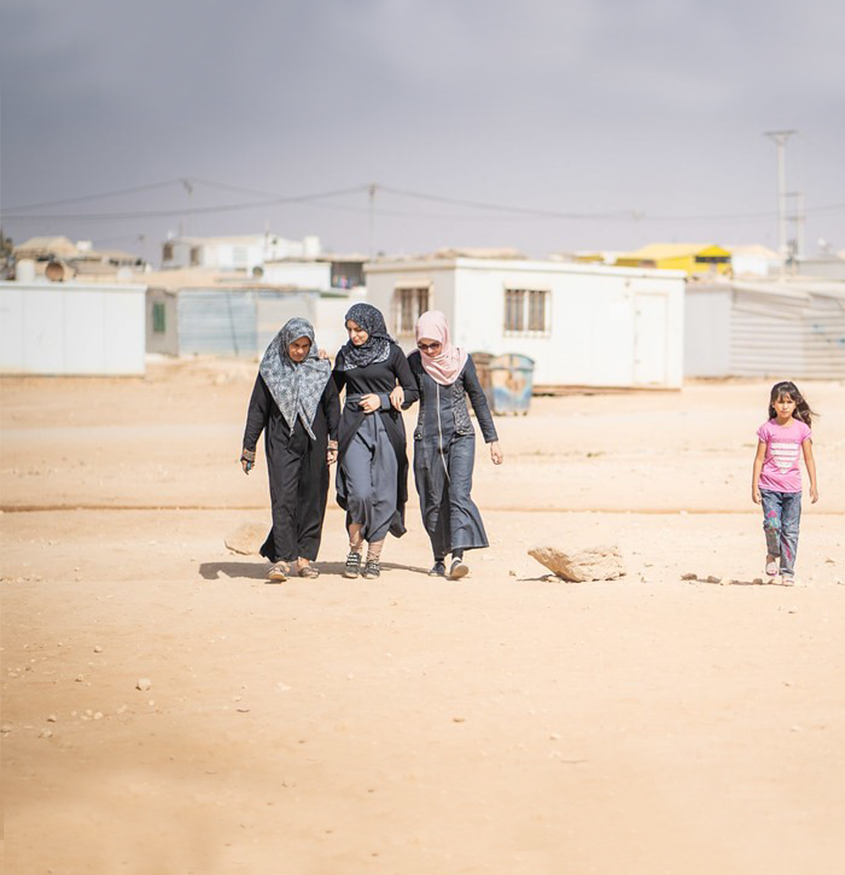G&D Editor Caroline Sweetman introduces the new issue
Welcome to this issue, a collaboration with UN Women’s Humanitarian Action and Crisis Response Office, and Oxfam’s Global Humanitarian Team. Theresia Thylin of UN Women and Julie Lafreniere of Oxfam joined me on the editing team for the issue.
By the end of 2018, 70.8 million individuals were forcibly displaced worldwide. The global population of forcibly displaced increased by 2.3 million people in 2018, and there were 37,000 new displacements every day. Roughly half of all these displaced persons are women and girls. Pre-existing gender inequality and discrimination can ramp up under stress and displacement, to devastating effect.
Gendered social norms affect women’s and girls’ ability to make decisions, to propose solutions, and to lead. Women’s livelihoods are disproportionally affected, their mobility is often restricted, and risks increase of sexual exploitation and abuse, and gender-based violence (GBV). Lack of healthcare in humanitarian settings has particular impact on women’s sexual and reproductive health: UNFPA statistics from 2015 indicate 60 per cent of preventable maternal deaths took place in emergency settings.
Yet investment in gender equality programming remains very low in the humanitarian sector. Funding patterns are difficult to track (even with the use of tools like the IASC Gender and Age Marker), but the evidence reveals chronic underfunding. In 2019, 0.3 per cent of humanitarian funding was channelled towards GBV violence programming. GBV services accounted for just 0.12 percent of all humanitarian funding between 2016-2018, which is on average less than USD$2.00 to each targeted woman or girl at risk of GBV in crisis and conflict settings. Not only is greater investment in gender equality programming required from humanitarian actors, but we also need increased funding to go to women’s rights organisations who play a key complementary role.
Women need to shape effective responses, on the ground and at senior leadership levels. Research shows that when women are involved in prevention and crisis response, it leads to better humanitarian outcomes and lowers risks. An accountable, efficient and transparent humanitarian system that saves more lives needs to recognise and value women’s agency and gender-specific needs. It should support women’s empowerment and community leadership, prevent and respond to violence against women, advance gender equality, and support long-term development as a fundamental goal.
Important policy commitments have been made to advance gender equality and women’s empowerment in humanitarian action, most recently at the World Humanitarian Summit in 2016. The Grand Bargain agreed there commits the largest donors and humanitarian aid organisations to improve the effectiveness and efficiency of humanitarian action, with improved accountability, better management and coordination of resources, and innovative financing arrangements. Yet despite the original commitments, the Grand Bargain largely failed to acknowledge the importance of integrating gender equality and women’s and girls’ empowerment outcomes into humanitarian action, and policy commitments remain difficult to translate into action. Painfully much is left to be done.
In this issue, Maria Al-Abdeh and Champa Patel write of the challenges faced by a women’s organisation working with Syrian women in Syria and neighbouring countries. They question whether policy commitments to empower local actors are bearing fruit in practice,and identify some of the challenges that still frustrate working with women and girls in humanitarian settings. They write of the tension between women’s priorities on the ground, and the requirements of donors and international partner organisations.
The use of innovative methods to advance transformative agendas is the focus of many articles in this issue. In her article, Isadora Quay shares the story of developing Rapid Gender Analysis, the gradual uptake of which, in crises around the world, demonstrates that it is possible to prepare an high-quality gender analysis during a rapid-onset emergency. From there, programming can develop which better fits the needs of women and girls. In their article, Theresia Thylin and Maria Fernanda Duartes share UN Women’s experience of innovative use of blockchain technologies to deliver better and more empowering support to women.
The physical design of refugee camps presents huge potential for planners to transform women’s lives there for the better. Michelle Farrington shares experience of Oxfam’s Women’s Social Architecture Project which worked with Rohingya women and adolescent girls in refugee camps in Bangladesh, teaming them with female architects with a background or interest in social or feminist design and architecture, to design and site WASH facilities that work for women.
An innovative IRC evaluation of the impact of cash programming on gender-based violence and wider gender power relations also features here. Alexandra Blackwell et al’s article emphasises the need to look for unexpected outcomes in impact evaluations and understand the wider ripple effect of such interventions on women and gender relations, if humanitarians are to fulfil their pledge to ‘do no harm’.
There’s much more in the issue, which is the longest we’ve ever produced, and testament to the cutting-edge work and commitment of feminists working in the humanitarian sector. Happy reading!
Photo: Three Syrian refugee women and a girl enter the Oasis Center for Resilience and Empowerment of Women and Girls operated by UN Women in the Zaatari refugee camp in Jordan. Photo CC license: UN Women/Christopher Herwig

